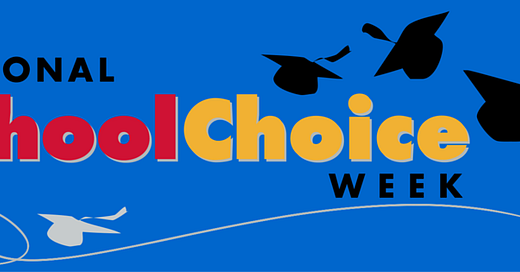An Open Letter to a School Choice Skeptic (Pt. 4)
(continued from previous post)
According to the National Center for Education Statistics, in the fall of 2016, about 50.4 million students enrolled in public elementary and secondary schools, with an additional 5.2 million students attending private elementary and secondary schools. The Home School Legal Defense Association reports that more than 2.3 million children – or 3 percent of the American student population – are educated in the home. That’s a total of just over 57 million PreK-12th grade students in our country, with families of 7.5 million of those having to pay twice – once as part of the subsidy for the education of the 50.4 million, and again for the education of their own kids.
But it's more than just taxes and where they go that's an issue in this debate. We should also talk about a number of other topics – class size, cost-effectiveness, and student success – characteristic of the school choice discussion.
I imagine your school is larger than Petra (we only have 215 K4-12th students), so between higher enrollment and accompanying federal, state, and local funding for it, your school may be able to provide more options in terms of class scheduling, electives, special needs programs, and athletic and arts opportunities. But with those options come larger class sizes to try to pay for them. The maximum class size allowed for Montana public schools is no more than 30 students per single grade classroom for middle school and high school. Ask any teacher and he or she will tell you that 30 kids is a lot for one teacher to handle, let alone teach.
In classrooms with enough space, I can make the argument that classes can reach a maximum of 18-20 and still function without detriment, but anything above this threshold is where key educational studies suggest class dynamics and instructional effectiveness devolve. What's really interesting, though, is even with large class sizes, education at an average government school with larger class sizes is much more expensive than at an independent school with smaller class sizes. While I don't know your school's specific budget, the average annual spending per Montana public school student in 2014 was $11,017/student, which is roughly $4,000 more than what we charge parents per student per year at Petra. The difference, of course, is who's paying for it - the government or the family.
Folks in Bozeman take pride in their schools, lauding them as the best government schools in the state; however, what often gets left out of the conversation is that Montana ranked 30th according to a national report released by Education Week in 2015 and was given a "C" average - the same as the one given our nation. Thus, in essence, Bozeman's government schools are the best of the average. Of course, there are bright spots, like Montana's Class of 2016 earning an ACT average composite score of 20.3, but our little class of eight Petra seniors last year earned a composite score of 28.0 - a 38% difference - which should make one wonder as to what more - not fewer - small, independent schools could accomplish if basic levels of funding (and the freedom for families to access and use them) were in place.




